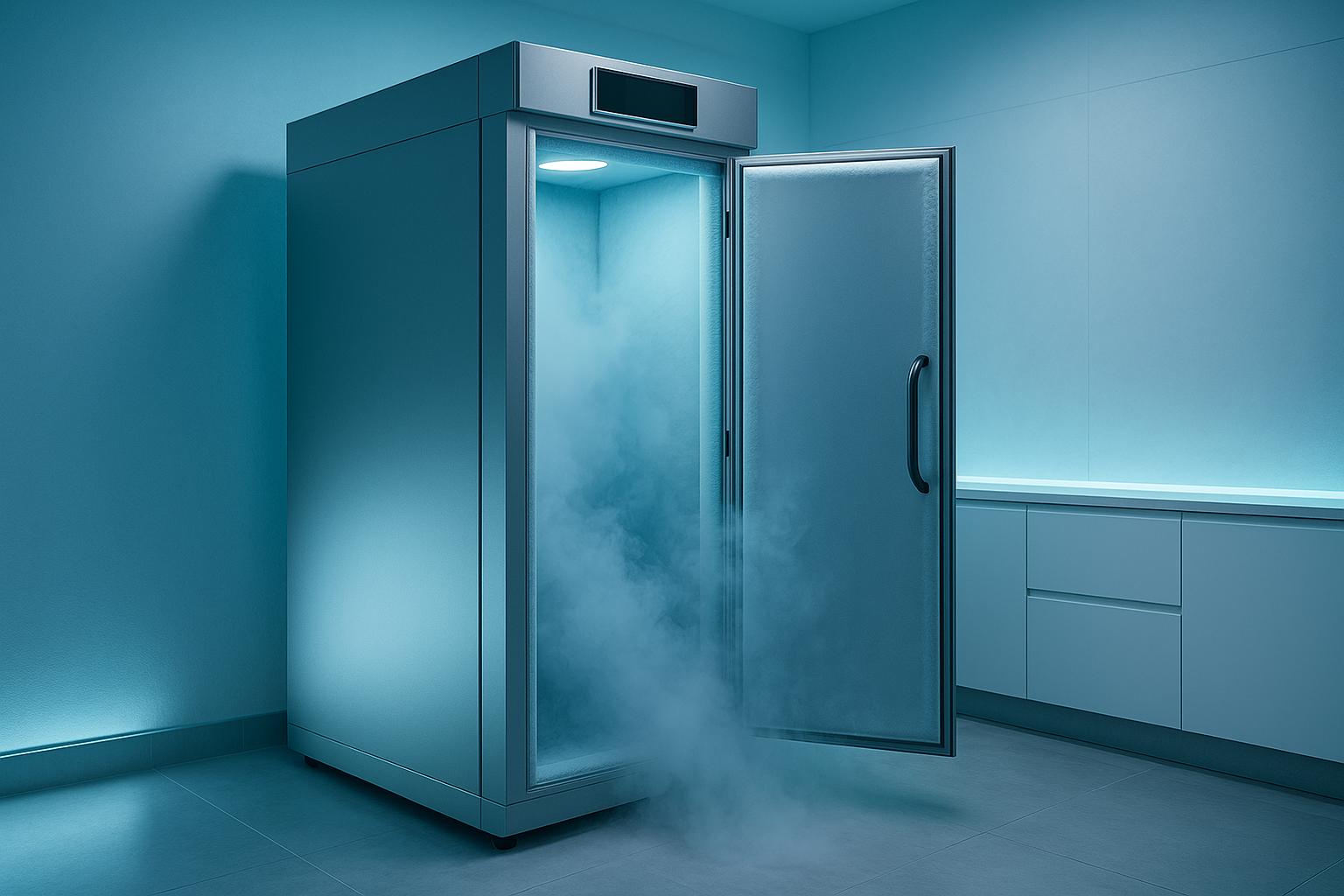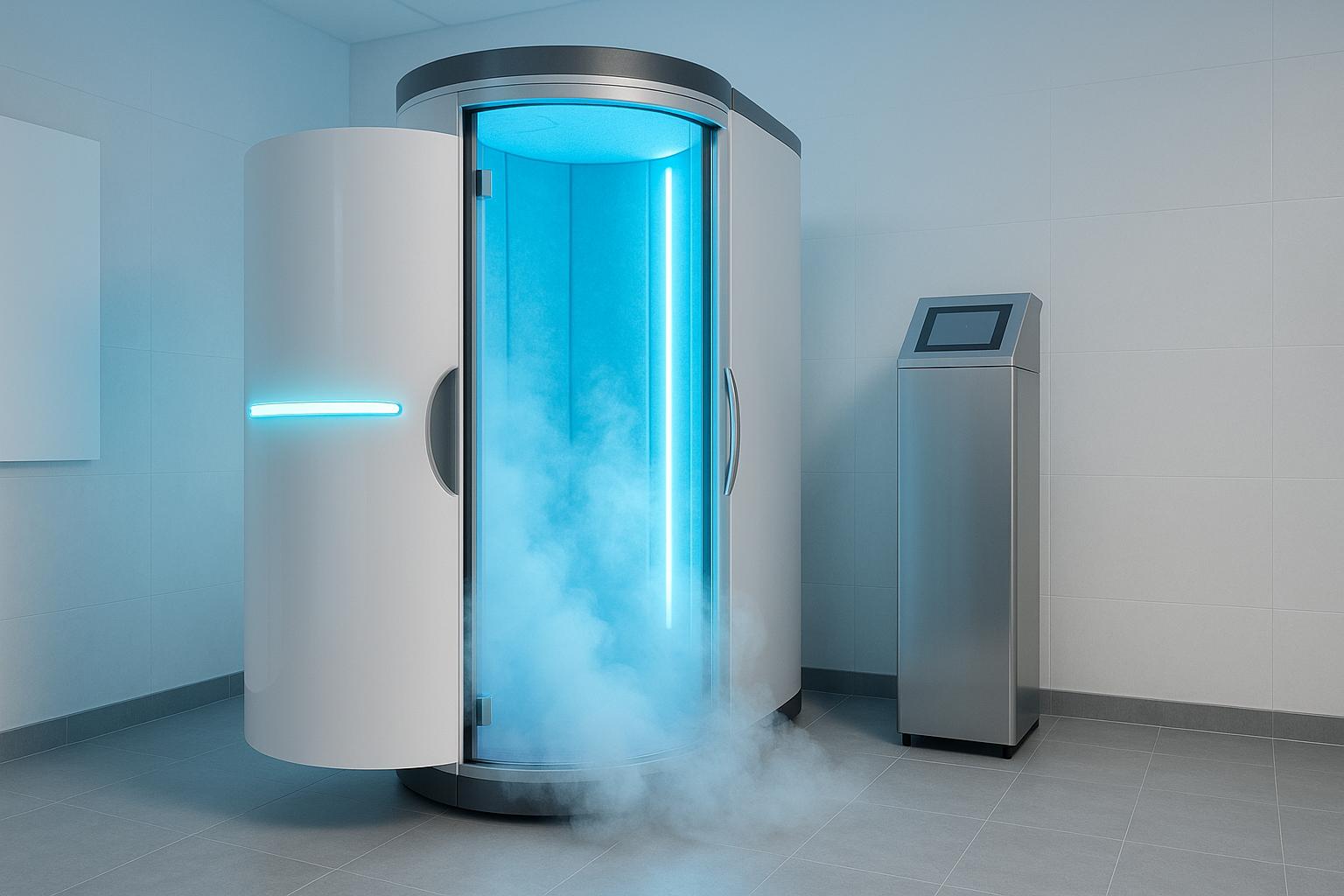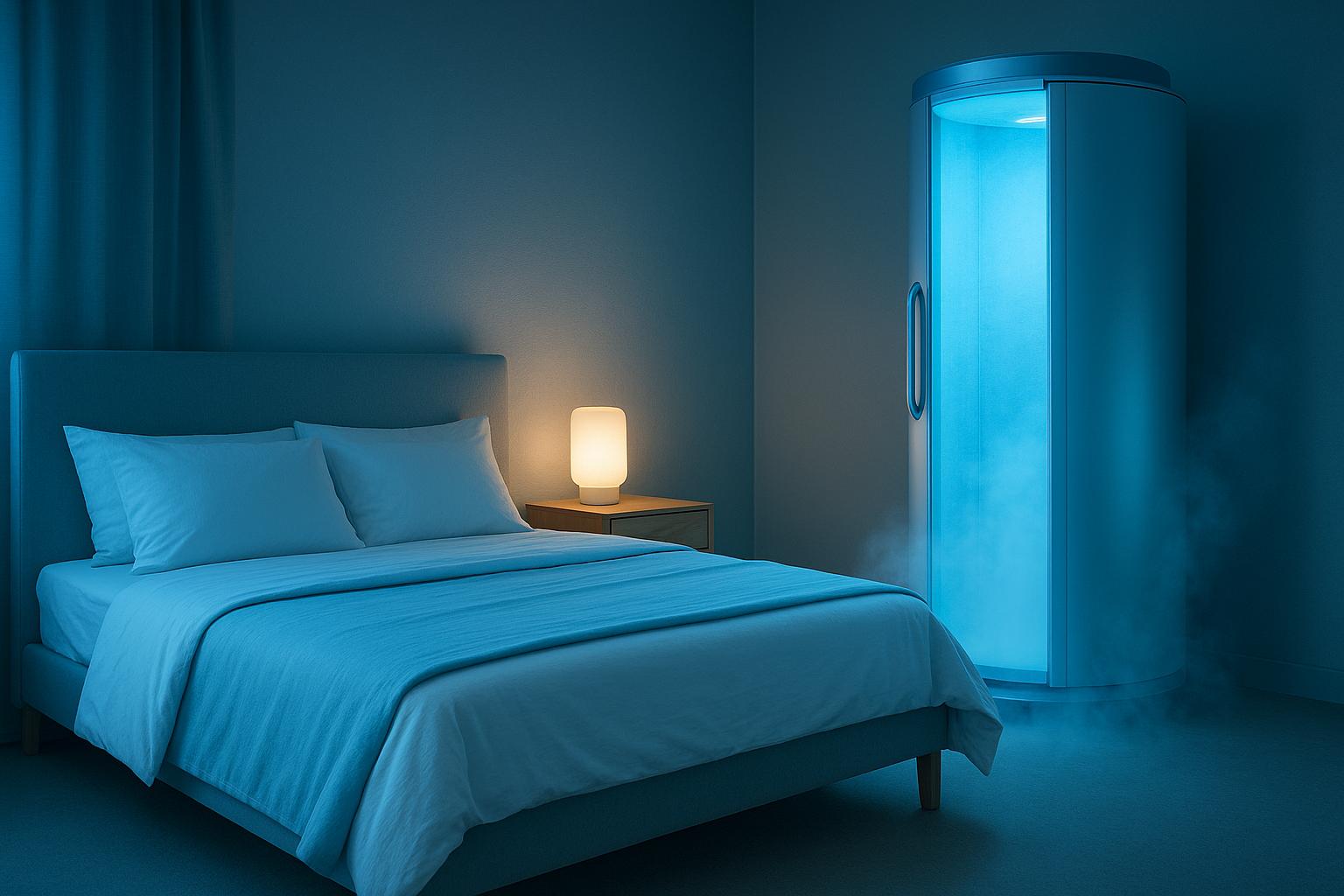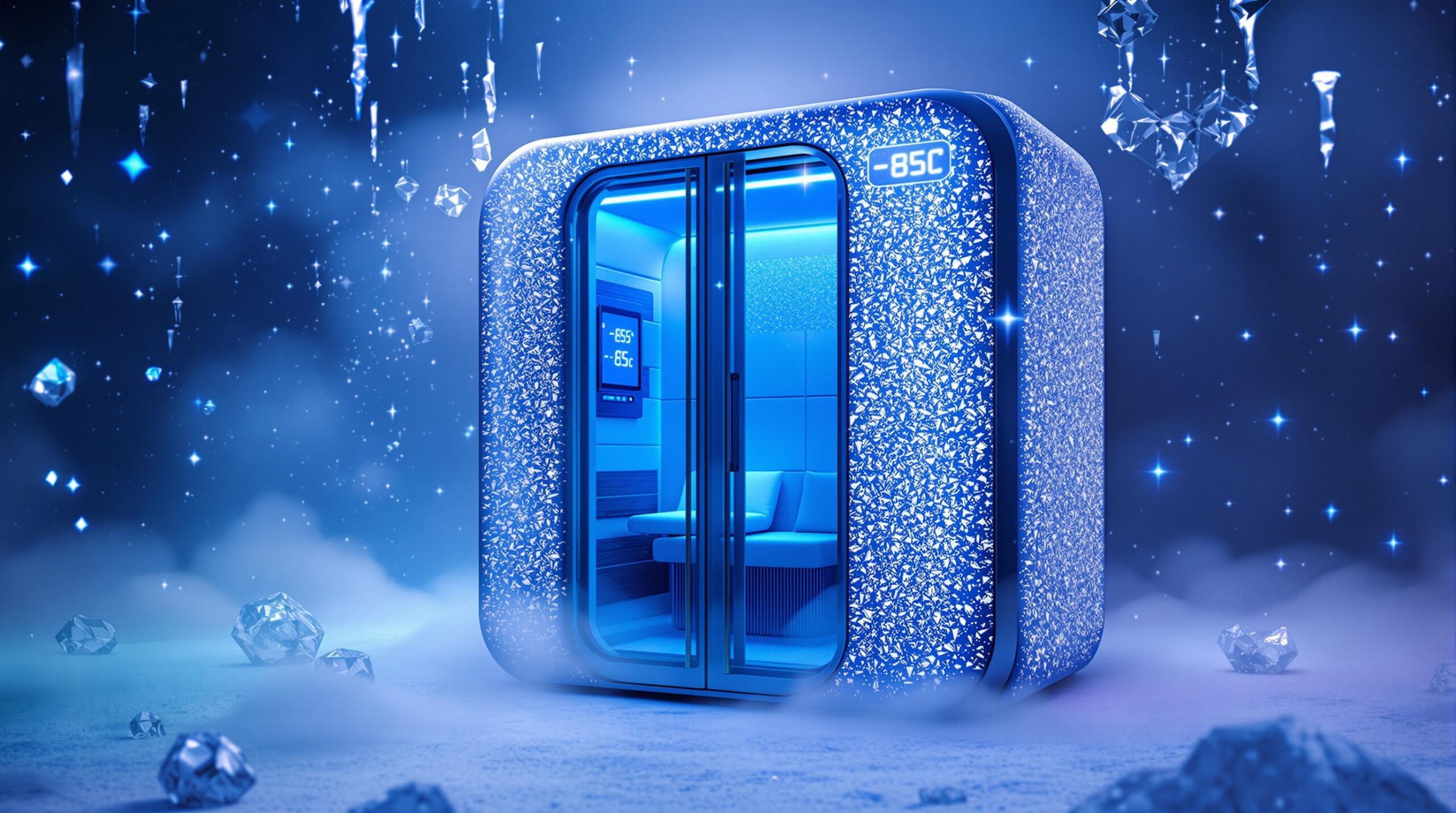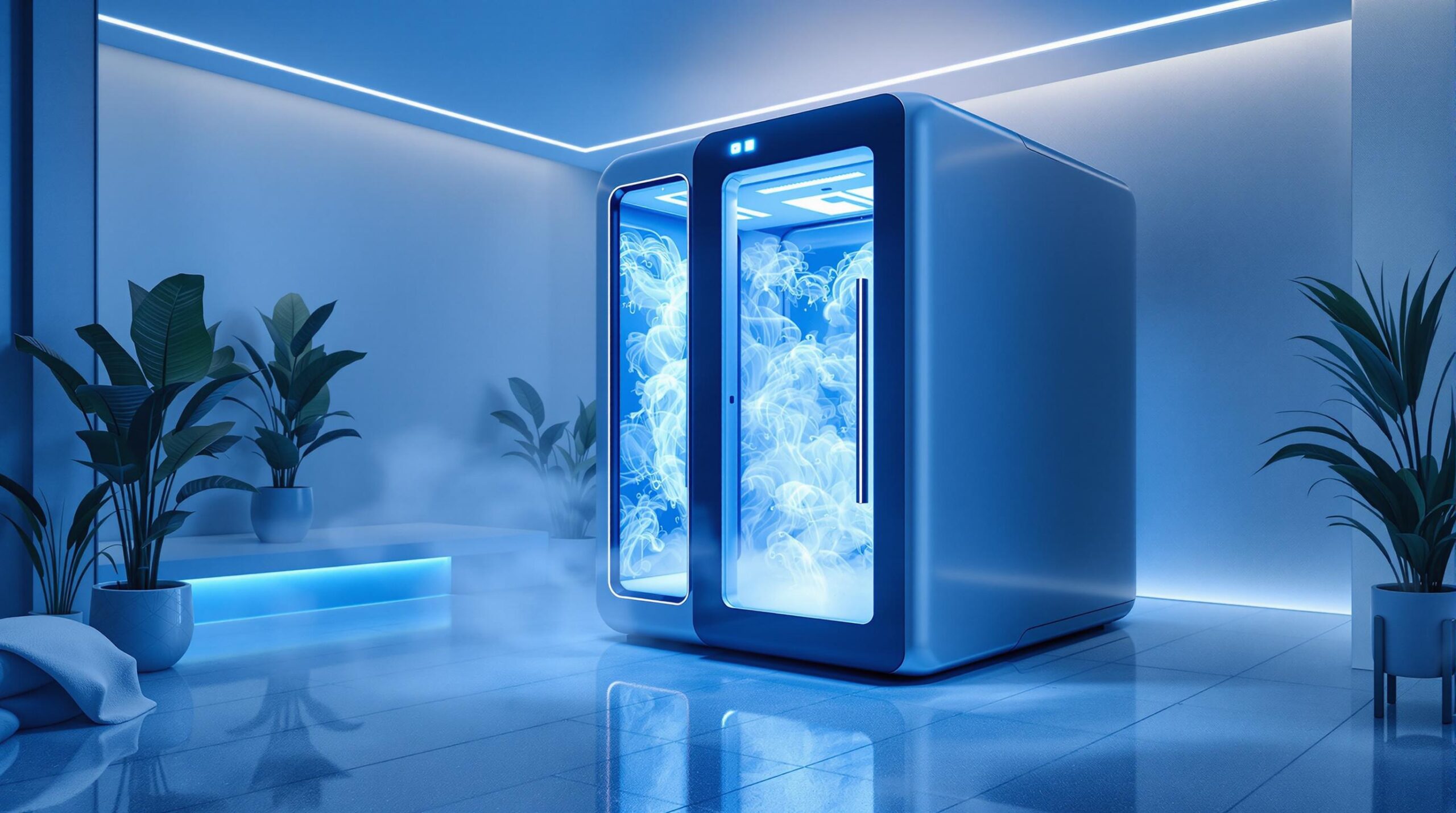Cryotherapy is a wellness treatment that uses extremely cold temperatures to improve recovery, ease pain, and boost overall well-being. At the Cryo Hub Berkhamsted, we offer genuine Whole Body Cryotherapy (where you head is also immersed in the cold) offering a safe and effective Cryo experience. Here’s what you need to know:
- What it is: A 3–5 minute session at temperatures as low as –85°C.
- Benefits: Reduces inflammation, aids muscle recovery, improves mood, and can burn 500–800 calories per session.
- Types:
- Whole Body Cryotherapy (WBC): Full-body exposure for system-wide benefits.
- Partial Body Cryotherapy (PBC): The head remains outside of the cryo-sauna
- Safety: Always consult a doctor if you have conditions like high blood pressure and follow professional guidance during sessions.
- Frequency: Regular sessions are recommended, depending on your goals.
Quick Comparison
| Feature | Whole Body Cryotherapy (WBC) | Partial Body Cryotherapy (PBC) |
|---|---|---|
| Temperature | –85°C | Varies by area |
| Coverage | Full-body | Specific body parts |
| Duration | 3–5 minutes | Varies |
| Caloric Impact | Burns 500–800 calories | Minimal |
| Focus | System-wide benefits | Localised pain relief |
Cryotherapy is popular among athletes and those managing pain or seeking wellness improvements. Always ensure sessions are conducted safely by trained professionals.
WBC vs PBC: Understanding the Differences
What Happens in Whole Body Cryotherapy
Whole Body Cryotherapy (WBC) involves stepping into a cryochamber where temperatures drop to an icy -85°C. At The Cryo Hub, sessions last 3–5 minutes, exposing the entire body to dry cold. This process stimulates key facial nerves and delivers full-body effects without the discomfort of water immersion.
How Partial Body Cryotherapy Works
Partial Body Cryotherapy (PBC) focuses on specific areas of the body. This approach uses localised cold exposure to target particular spots while leaving the rest of the body unaffected. It’s ideal for addressing specific pain points or aiding recovery in targeted areas.
WBC vs PBC: Direct Comparison
| Aspect | Whole Body Cryotherapy | Partial Body Cryotherapy |
|---|---|---|
| Temperature | –85°C (controlled environment) | Varies by treatment area |
| Coverage | Full-body, including facial nerves | Specific body parts only |
| Movement | Free movement in the chamber | Limited to the treated area |
| Session Duration | 3–5 minutes | Varies by treatment |
| Caloric Impact | Burns 500–800 calories per session | Minimal metabolic effect |
| Treatment Focus | System-wide benefits like reduced inflammation, improved metabolism, and mood enhancement | Localised pain relief and recovery |
For more details, check out our in-depth WBC vs PBC guide. Knowing these differences can help you choose the treatment that best fits your needs.
sbb-itb-32603e3
10 Most Asked Cryotherapy Questions
Safety Guidelines for Cryotherapy
If you have high blood pressure or heart-related issues, it’s important to get a medical check-up before starting cryotherapy. During sessions, sensitive areas are covered with protective gear. A trained operator evaluates each client beforehand and monitors the entire session to ensure safety, allowing for an immediate exit if needed [1].
Recommended Treatment Frequency
Once safety measures are in place, the frequency of sessions depends on your personal goals, be they pain relief or boosting athletic performance. Regular treatments are often suggested for the best results [1].
Proven Health Effects
Studies highlight several benefits of cryotherapy, such as faster recovery after physical activity, improved mood, a stronger immune system, and a boost to your metabolism [1].
Temperature Levels Explained
Whole-body cryotherapy involves exposing the body to extremely low temperatures in a dry-cold environment. This method is carefully regulated to ensure safety and is generally more tolerable than cold water therapies.
Session Duration Guide
Cryotherapy sessions typically last between 3 and 5 minutes. For beginners, it’s best to start with shorter durations and gradually increase over time [1].
Effects on Weight Management
Cryotherapy can help with metabolism, which may support energy balance and contribute to overall wellness goals over time [1].
Muscle Recovery Research
Research shows that cryotherapy is effective for muscle recovery. Exposure to controlled cold temperatures helps repair tissues and reduce inflammation, making it a popular choice for athletes [1].
Known Risks and Precautions
If you have cardiovascular conditions, ensure you get a doctor’s approval before trying cryotherapy. Always wear the recommended protective gear, stick to the time limits, and only undergo sessions under professional supervision. [1].
Cryotherapy vs Ice Bath Treatment
Cryotherapy offers a dry-cold alternative to traditional ice baths. It delivers similar benefits but is often more comfortable and easier to tolerate [1].
UK Price Guide
Check our website for the latest session prices and package deals to help you on your wellness journey. At the Cryo Hub Berkhamsted, we aim to provide the best value and most accessible Cryo experiences in the UK.
Summary
Cryotherapy is a wellness treatment where a 3–5 minute whole-body session at –85°C can help boost metabolism, ease inflammation, speed up muscle recovery, and burn between 500–800 calories[1].
Its blend of health benefits and safe application makes it appealing for athletes, those dealing with chronic pain, and anyone aiming to improve their overall well-being. To get the best results, ensure sessions are handled by qualified professionals and adhere to safety guidelines.
When done regularly with modern equipment and evidence-based practices, cryotherapy can also support better sleep, improved mood, and faster physical recovery.

